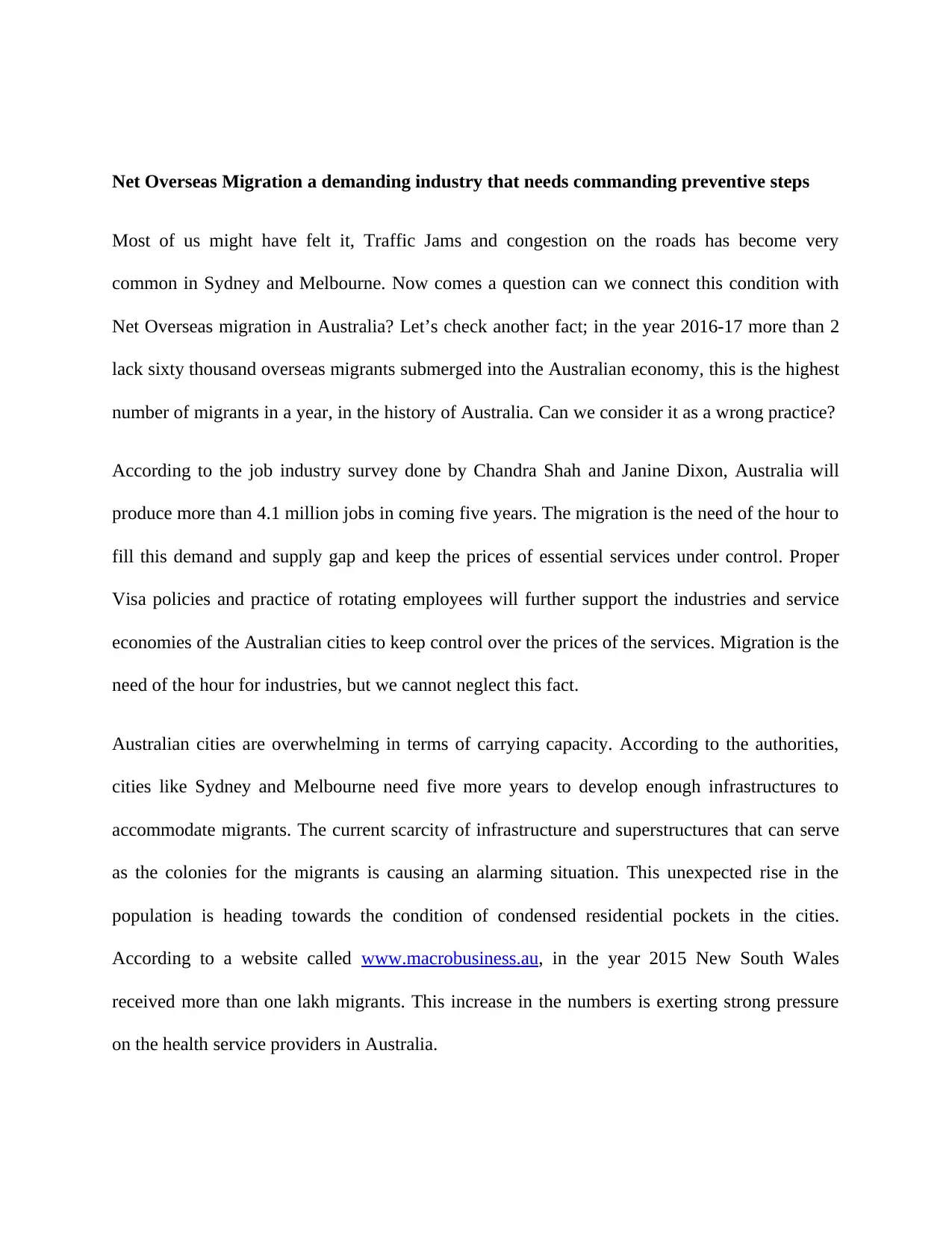Impact of Net Overseas Migration on Australia: A Detailed Analysis
VerifiedAdded on 2022/12/18
|3
|648
|88
Report
AI Summary
This report analyzes the multifaceted impacts of net overseas migration on Australia's economy and society. It highlights the significant role of migration in filling job market demands while also addressing the challenges posed by rapid population growth. The report examines the strain on infrastructure, particularly in cities like Sydney and Melbourne, and the subsequent pressure on healthcare services. It discusses the emergence of condensed residential areas for migrants and the potential health risks associated with unhygienic living conditions, leading to increased pressure on public health resources. The report further explores the shift from quality-based to volume-based healthcare, impacting service standards and the financial burden on native Australians seeking quality medical care. The conclusion underscores the need for job-based migration but emphasizes the importance of addressing infrastructural and healthcare capacity to ensure sustainable growth and well-being.
1 out of 3









![[object Object]](/_next/static/media/star-bottom.7253800d.svg)